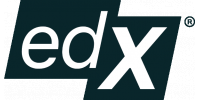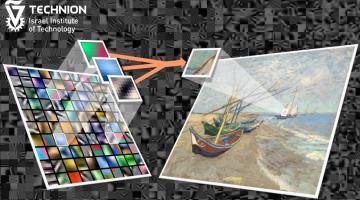- From www.edx.org
Sparse Representations in Signal and Image Processing: Fundamentals

- Self-paced
- Free Access
- Fee-based Certificate
- 5 Sequences
- Advanced Level
Course details
Syllabus
This program is composed from two separate parts:
1.Part 1: Sparse Representations in Signal and Image Processing: Fundamentals.
2.Part 2: Sparse Representations in Image Processing: From Theory to Practice.
While we recommend taking both courses, each of them can be taken independently of the other. The duration of each course is five weeks, and each part includes: (i) knowledge-check questions and discussions, (ii) series of quizzes, and (iii) Matlab programming projects. Each course will be graded separately, using the average grades of the questions/discussions [K] quizzes [Q], and projects [P], by Final-Grade = 0.1K + 0.5Q + 0.4P.
The following includes more details of the topics we will cover in the first course:
Overview of Sparseland, including mathematical warm-up and intro to L1-minimization.
Seeking sparse solutions: the L0 norm and P0 problem.
Theoretical analysis of the Two-Ortho case of P0, including definitions of Spark and Mutual-Coherence.
Theoretical analysis of the general case of the P0 problem.
Greedy pursuit algorithms including: Thresholding (THR), Orthogonal Matching Pursuit (OMP) and its variants.
Relaxation pursuit algorithms including Basis Pursuit (BP).
Theoretical guarantees of pursuit algorithms: THR, OMP and BP.
Practical tools to solve approximate problems, including exact solution of unitary case, Iterative Re-weighted Least Squares algorithm (IRLS) and Alternating Direction Method of Multipliers (ADMM).
Theoretical guarantees to approximate solutions including definition of Restricted Isometry Property (RIP) and pursuit algorithms' stability.
Prerequisite
Advanced knowledge on linear algebra and optimization; basic familiarity with signal and image processing.
Instructors
Michael Elad
Professor of Computer Science, Technion
Israel Institute of Technology
Alona Golts
Lecturer
IsraelX
Platform
Harvard University, the Massachusetts Institute of Technology, and the University of California, Berkeley, are just some of the schools that you have at your fingertips with EdX. Through massive open online courses (MOOCs) from the world's best universities, you can develop your knowledge in literature, math, history, food and nutrition, and more. These online classes are taught by highly-regarded experts in the field. If you take a class on computer science through Harvard, you may be taught by David J. Malan, a senior lecturer on computer science at Harvard University for the School of Engineering and Applied Sciences. But there's not just one professor - you have access to the entire teaching staff, allowing you to receive feedback on assignments straight from the experts. Pursue a Verified Certificate to document your achievements and use your coursework for job and school applications, promotions, and more. EdX also works with top universities to conduct research, allowing them to learn more about learning. Using their findings, edX is able to provide students with the best and most effective courses, constantly enhancing the student experience.

